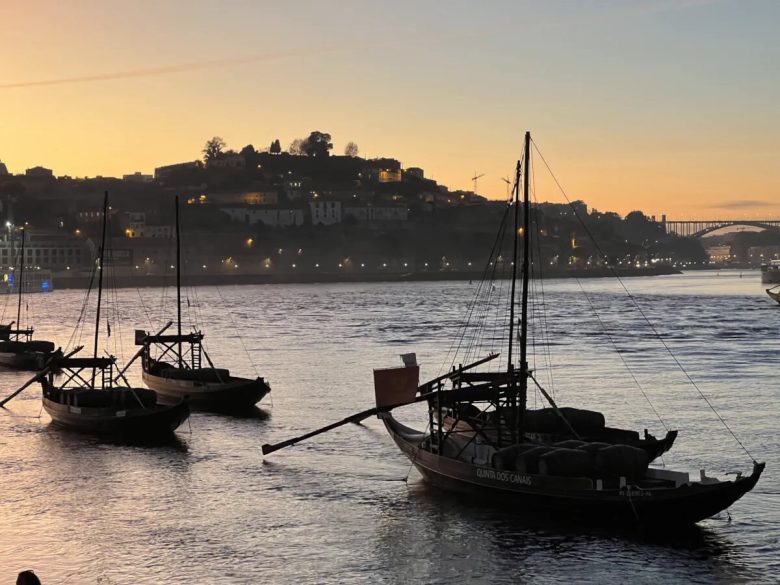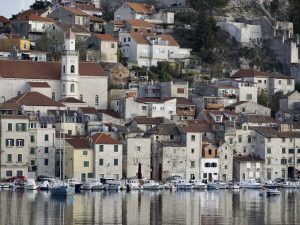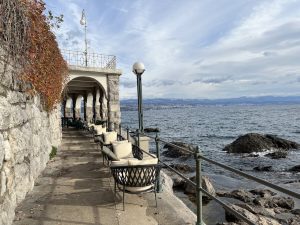Porto is the second largest city in Portugal and has a busy airport. Portugal Air has a business model similar to Iceland Air allowing a “free” long layover in Lisbon or Porto. If you ever have the chance to spend a day in Porto, take it! This is a fun to explore and extremely forgiving to those who arrive with no plan for what to see. Throughout the city center, you will stumble into beautiful views and interesting sites around every corner. Of course, planning always helps to make the most of your time and money.
Our original vision for getting to Croatia from Spain was to fly from Porto because of its close proximity to our month long stay in in Pontevedra. We had built in a two day visit in Porto before the flight. However, as we looked at airfares to get from Spain to Croatia, we discovered it was much cheaper to fly from Madrid.
We also discovered in our travel research that Spain’s hyper-efficient rail system is not all that well integrated with Portugal. To get from Pontevedra to Porto by train (110 miles / 180 km), it takes four hours on exactly one train train per day, which departs at 6 pm. In contrast, to get from Pontevedra to Madrid by train (350 miles / 600 km), it takes four hours and offers six departure times evenly spread between 6 am and 6 pm. We altered our plan and bought tickets to fly out of Madrid on November 16th.
In Fall 2002, Lyn flew to Lisbon and met me during a four-day port visit while I was deployed for seven months on the aircraft carrier USS GEORGE WASHINGTON (CVN-73). I took leave and we had a terrific couple days exploring Lisbon. Despite our affinity for Spain, we were looking forward to seeing more of Portugal and were disappointed about the change of plan for getting to Croatia.
After the success of our road trip to northern Galicia, we decided it was worth the time and expense to try exploring by car in a southerly direction from Pontevedra. This time, we rented the car on Friday morning and returned it late Sunday night. How much can you see of northern Portugal in 48 hours? Well you can do a lot, but still only scratch the surface on everything Portugal has to offer. We focused our time on Porto and made one additional stop each way in the smaller cities of Viana do Castelo and Guiamãres.
Warning! Rabbit hole ahead.
Writing the name Guiamãres reminded me to comment on the use of the character ã, which is a letter that exists neither in English nor in Spanish. For those who don’t write in foreign languages often, you may not be familiar with using “ALT Codes” for typing “strange” characters on your keyboard. If you use them enough you eventually learn them by heart. As an example, I’ve gotten really good at typing “José and María” because I know 0233 and 0237 are the Alt codes, respectively, for “é” and “í”. To get the character, just hold down the ALT key and type the associated ALT code.
For example, if you type J – o – s – “ALT + 0233″” and you get José. For writing El Camiño, it’s simply C-a-m-i- “ALT + 164” – o.
You can Google the full list of ALT Codes. There’s a bunch. The most useful one I have found for writing Spanish and Portuguese can be found here. One alternative is to write everything on your smartphone, which gives you a full menu of accent mark options by simply holding down the letter when you type. On an iPhone, for example, if you hold down the leter ‘a’ while typing, the iPhone will give you eight alternatives to the plain old letter ‘a’. The other alternative, of course, is to buy a keyboard designed for the language you are using. That gets a bit cumbersome though and also makes it hard to write in English.
Exiting the rabbit hole on ALT codes now.
With time running out here in Spain, my plan is to “mail it in” on this post and largely duplicate what I put on Facebook. It’s always a delicate balance how much to push out on Facebook and what to leave for people to pull from this blog. On the one hand, Lyn and I get a lot of positive feedback from friends and family about sharing our travel adventures on social media. On the other hand, we try not to overplay our hand by dumping dozens and dozens of photos with no context other than “look at us”. During our previous road trip, we posted very little on Facebook and focused on the Halloween festivities to share the moment, which is our preferred way of updating people on social media. An occasional long post is useful, too, since many people don’t read blogs. This is a long way of saying that if you read our relatively meaty Facebook entry on Portugal, you are going to see a lot of redundancy in what follows here. Sorry.
Overview
Our weekend packed a lot in but was essentially just a few hours in each of the smaller cities and 24 hours in Porto.
Viana do Castelo is known for traditional crafts, a pretty city center, a bridge designed by Gustave Eiffel’s architecture firm, and a church on a hill overlooking the city.
Guimarães known for its preservation of medieval architecture and as the cradle of Portugal’s nationhood in the early 1100’s.
Porto is know for its Port wine and its seaport. Our food tour featured Portuguese staples, including cod fish fritters, sardines, “bifana” pork sandwiches, sheep cheese with pumpkin compote, and “nata” mini pies. It also included wine from the famous Douro River valley region east of Porto.
During our visit, we had beautiful weather with warm, sunny weather but just a hint of Fall in the air. We also learned that November 11th is the day the Portuguese all buy roasted chestnuts to celebrate St. Martin’s Feast Day and the arrival of winter weather. As we walked around Porto and admired the river banks from a distance, the army of street vendors roasting chestnuts seemed almost like a network of Navajo smoke signals (note: I have never actually seen Navajo smoke signals).
For our Navy friends, we honored the ‘Dining In’ tradition by touring one of several Port wine bodegas on Porto’s riverfront. A Dining In is a formal dinner attended by the members of a Navy unit. The event is rich in customs and protocol which were inherited from the Royal Navy with little alteration. Britain and Portugal have a long, interesting, and complex history. One manifestation of this relationship is that a Dining In ends with a round of toasting and it can only be performed with Port wine. Why Port? I do not know. By definition, a custom is something you have done so long that no one knows the reason why. In any case, I have many warm memories of the Dining In tradition which are triggered by even the faintest sniff of Port wine.
Viana do Castelo
Viana do Castelo sits at the mouth of the Limia River about 15 miles south of Portugal’s coastal border with Spain. From our place in Pontevedra, it was an easy 90-minute drive. We chose it because it’s on the coast and has a reputation as a center of folk crafts and folk dress. It also has a church that sits on a mountain looking down on the city which looked worth seeing. Normally, a funicular operates to bring visitors up the mountain but it’s just as easy to drive it.
We rented at Volkswagen Golf this time (one size up from the Fiat 500) so it felt good to have some power and not having to downshift to go uphill on the highway. We’ve rented one car in Iceland and three cars in Spain now; all of them have been manual transmission.
We discovered a gap in our travel planning when we crossed the border into Portugal and our cell phones started telling us it was an hour earlier than we thought. Unlike Spain, Portugal has accepted it geographic “westernness” and aligns its time zone to the realities of the sun’s astronomical movement across the sky (yes, I know the sun isn’t actually moving). In other words, Portugal is in the same time zone as England as is thus an hour behind Spain. This gave us an extra hour to explore before we had to get back on the road to make our food tour in Porto later that day.
Normally, we arrive in a town with a plan but our trip was so short fused and so focused on Porto that we didn’t even know where we should park the car when we got to Viana do Castelo. The city turned out a bit bigger than we had expected and we ended up parking in their shopping mall connected to the train station, which was a decent central location for setting out on foot into the historic center.
On our way through the city’s main square, Praça da Republica (ç is ALT code 0231 by the way), we came upon a unit from the Portuguese Army preparing for some kind of ceremony. It included a military band and had some TV cameras set up. This was late morning on November 4th. We weren’t sure what the purpose of it was. Had we been in Spain, we would have worked up the courage to ask a local resident what was happening, but the language barrier was an obstacle. We decided it was a local affair and since it likely involved speeches we wouldn’t understand, we opted not to be the gawking tourists and moved on. We found the riverfront and stopped at an outdoor café for a late morning coffee. While we were enjoying the caffeine boost and the scenery, an army unit in the adjacent green space did a 20-gun artillery salute, ostensibly as part of the ceremony preparations we saw. My theory (and this is just a theory) is that because Portugal celebrates St. Martin’s Day on November 11th as a feast day, they were observing Remembrance Day a week early (in fairness to St. Martin, he was around long before Nov 11the became Armistice Day and Remembrance Day). I learned on Wikiepedia that Portugal did participate in WWI, although most of its 12,000 combat deaths occurred on the colonial front, especially Angola, and not in the trenches of Europe. Those combat casualties do not include the 82,000 civilian deaths attributed to food shortages and 138,00 deaths from the flu pandemic of 1918. In other words, they have plenty to remember.

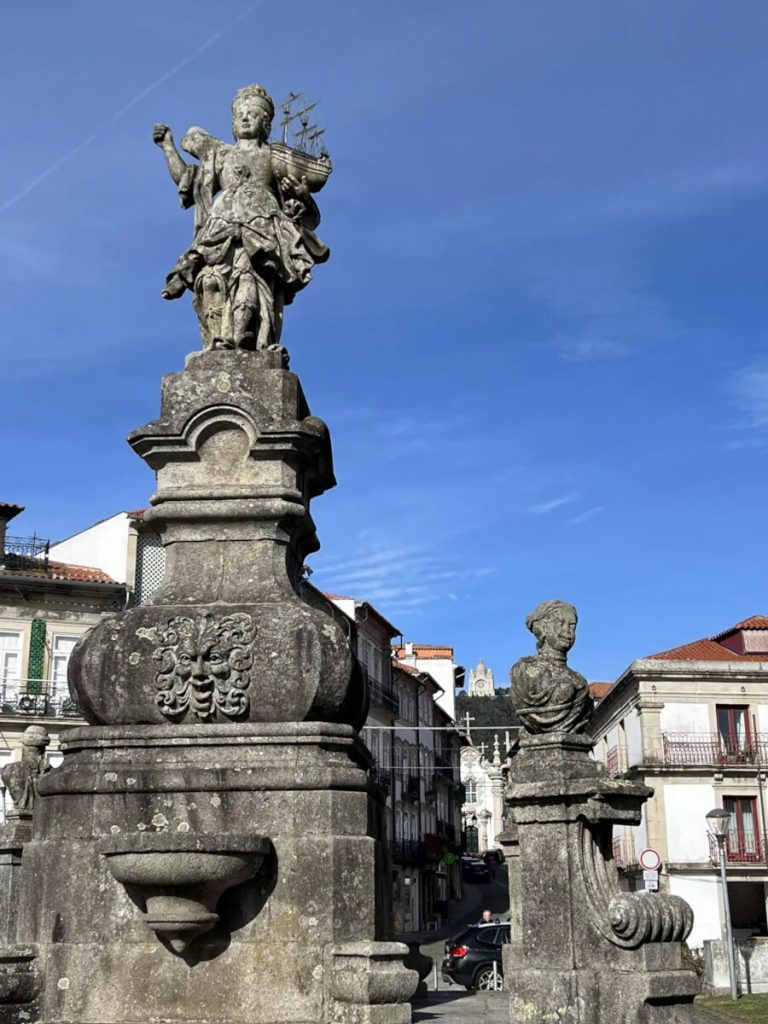




Click here to learn more at the Museu do Trafe official website. You can select English in the top right.



The church on the hill is Santuário de Santa Luzia. It’s not the oldest church in Portugal but the site is historic and has a commanding view of the coast and the city. Our drive up the mountain coincided with some kind of important person (Prime Minister, President, or maybe Lady Gaga?) visiting the neighboring posada/hotel (a former monastery) for a lunch banquet perhaps. In hindsight, this event was probably associated with the ceremony and 20-gun salute we had seen earlier. Whoever it was, they had enough clout to require a police car or police motorcycle every 500 feet all the way up the mountain. Considering this level of security, I’m surprised we weren’t questioned or turned away entirely.
For me, this was especially nerve racking because I got an e-mail from Hertz that morning about a speed camera violation from four weeks earlier. Apparently, I was going 98 km/hr in an 80 km/hr zone on the highway coming into Córdoba; the speed limits change a lot on Spanish highways so please don’t judge me; I try pretty hard to respect the laws of countries I am visiting and as a spoiled American, speed cameras that actually result in a ticket are not part of my risk calculus when I drive. Well, they are now.
So it’s bad enough to know I have an outstanding ticket. It feels even worse to be a wanted man around so many police. In your own country, you can kind of assess the atmosphere and gauge what the purpose of a large police presence is, but in a foreign country, the police all seem very serious and very annoyed. I was sweating like crazy when we finally parked the car.
In the picture of the church, that’s our VW Golf rental car at the bottom of the stairs. That car had an awesome cruise control that automatically adjusts to the speed limit (I’m not quite sure how). Nowadays, I strictly observe the speed limit and set the cruise control to match it (and not 1 km/hr more). The Audis, BMWs, and Teslas tailgating me will just have to deal with it.
Porto
We drove to Porto and parked the car just in time for our scheduled 3:00 p.m. food tour. We met the tour guide and the other six members of the tour group at a café and visited five venues over the next three hours to sample a variety of Portuguese dishes.
During our food tour we learned that cod fishing was a a strategically important component of Portugal’s self-sufficiency during the 1950s-1970s. In fact, during our time in Viana do Castelo, we read about (but did not visit) a museum ship that had been used as a deployable hospital ship to provide medical and dental care to the crews of the Portuguese fishing fleet. Not unlike a Navy, the Portuguese fishing fleets roamed the entire north Atlantic, contributing to the depletion of the codfish stocks. The cod (they call is bacalao) is still a huge part of the Portuguese diet and identity.
Due to the nature of the long cod fishing voyages, most cod is salted and cured so you have to soak it in water for a day or two to make it edible. In this shop, you can buy the parts of the cod based on cuts (with prices varying widely). We have had some good cod in Galicia and Portugal and we have had cod that could have used a bit longer soaking to get out the salt.
What’s a good food tour without good drinking to go along with it? We learned about (and drank) Portuguese green wine, red wine, and Port wine from the Douro River valley, which advertises “nine months of winter and three months of hell” for its climate. The valley is well inland and sound like a rather unpleasant place to live, especially in the summer, but at least they have awesome wine.
Our tour also included a short stop outside the Majestic Café which is famous as a venue where J.K. Rowling wrote a portion of Harry Potter and the Sorcerer’s Stone during while living in Porto for two years, during which time she married a TV journalist, had a child, and divorced under grim circumstances involving domestic violence (it’s all in her Wikipedia article). Like the Majestic Café, a nearby bookstore where J.K. Rowling spent time is also a tourist destination. When you feel the charm of Porto, you can see how some of its elements probably influenced her creative genius in building Hogwarts.

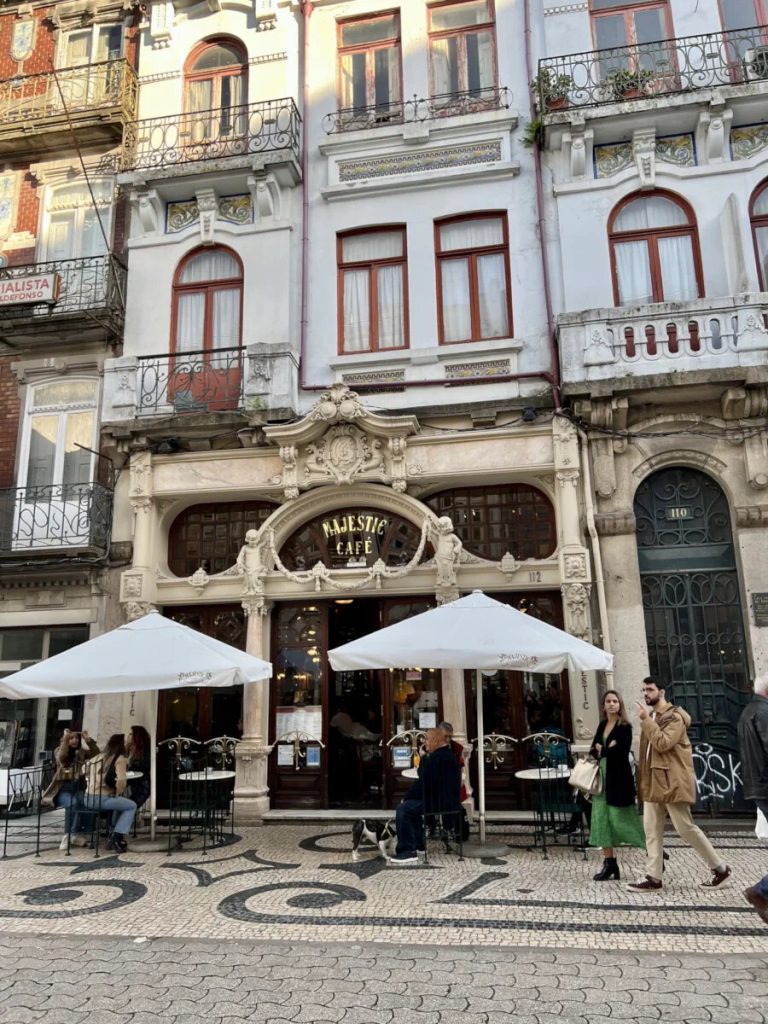










We stayed in the Zero Box Lodge. If you have been to Camp Lemmonier in Djibouti, this is a slight improvement on the same concept of living in a box, only they are made from wood instead of metal (and both the scenery and climate are much nicer in Portugal). Our room was literally a cube of wood with a bed, a shelf, and two tiny night stands. The ventilation worked great and we slept soundly in the pitch dark. The room also had a small bathroom. Everything you need for $60/night in the heart of Porto (that was the non-refundable rate; not recommended if you are flying to Porto). Outside the box, the hotel has all the amenities you would want: restaurant, bar, rooftop terrace, even a big tank of water on the roof for floating that plays underwater music.
Best of all, when you check in, they give you free beer (one per person) which they keep inside a big wall of compartments that hold the keys and documents for each room. As a result, you can tell from looking at it which floors have the most occupancy. For better or for worse, they put us on the fourth floor which did not have many other guests. The young receptionist from Greece explained with excitement that the downstairs bar that night was featuring a DJ who wasn’t starting until 9:00 p.m. so we concluded our advanced age probably got us the room on the “quiet floor” well removed from the party. It worked because we didn’t hear a thing.
The wood box hotel was a cool and fun experience. Not knowing Portuguese building code, we couldn’t help but wonder a little how safe it was in the even of a fire, but it was only two nights and what are the odds of that happening?





Porto Day 2: walking the city
We signed up for a tour of a Porto bodega (winery) at 5:30 p.m. so our day was largely unstructured and we were happy just to set out and explore the city. We made our way to the Porto Cathedral, then the train station, the the Torre dos Clérigos, which we had intended to climb but the line was too long. We moved on to a public garden overlooking the city near the Jardins do Palácio de Cristal. We next planned to visit the Palacio da Bolsa but we stopped for lunch and, in true European fashion, it took much longer than we had anticipated, so Palacio da Bolsa went on the wait list for our next trip to Porto. Lunch was great though and I had my first hamburger in over two months.





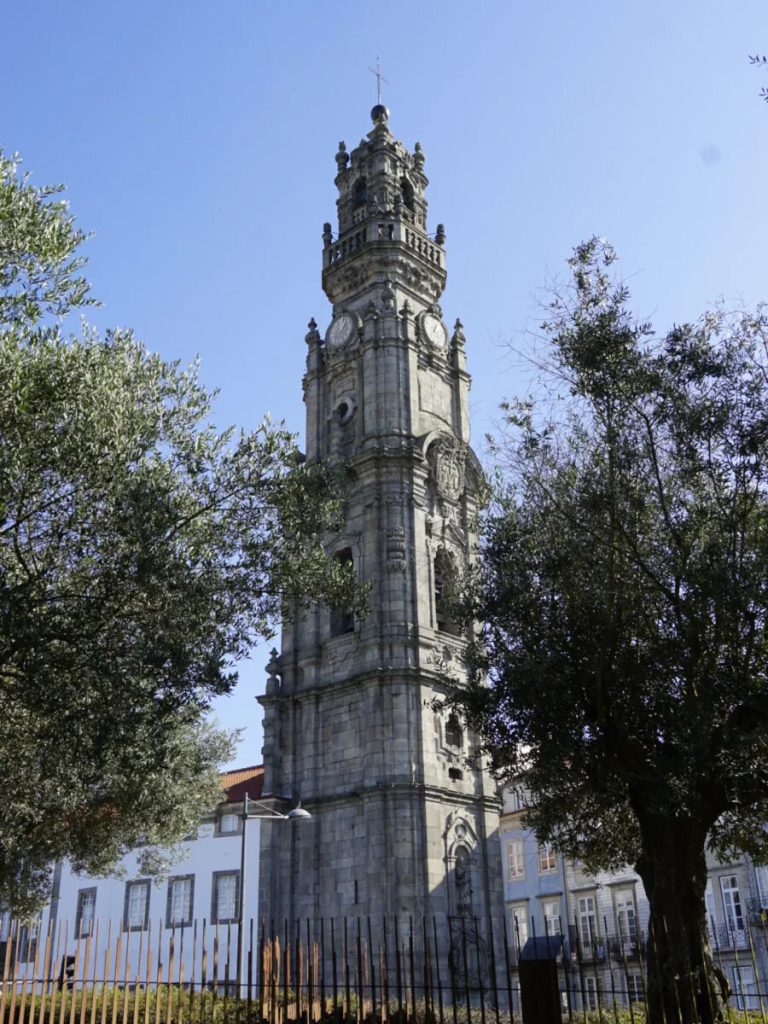






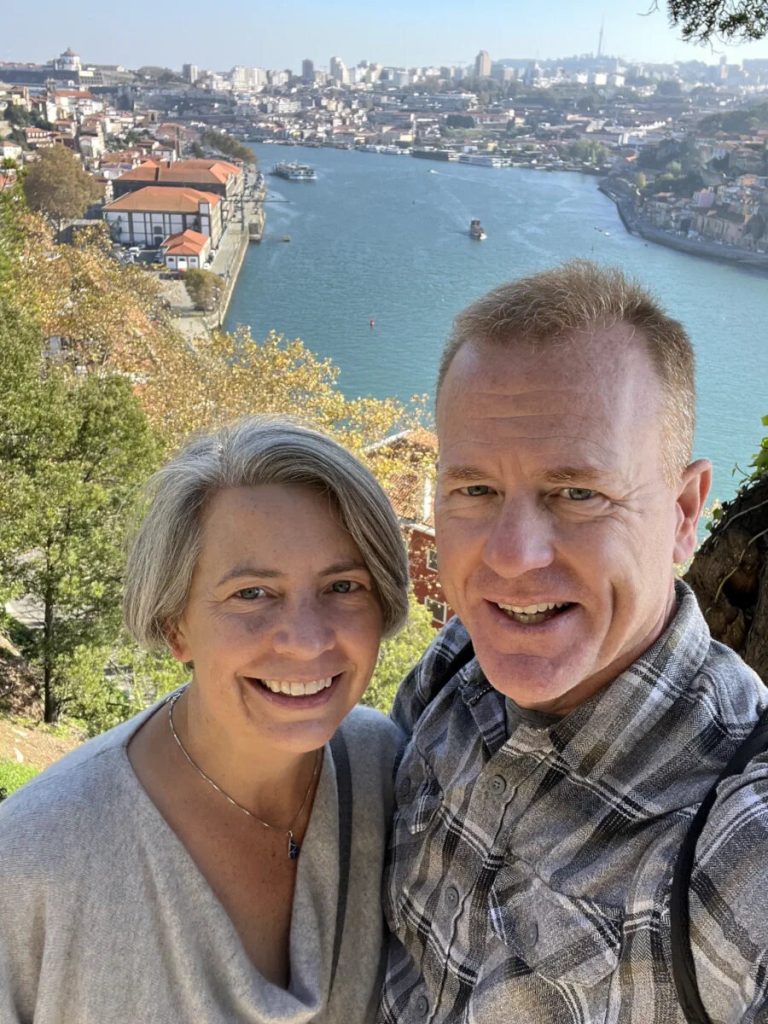
We thought we had seen a lot of Porto’s city center but then we worked our way down to the Riverfront and, wow, did it blow our hair back. Both sides of the river were bustling with activity: street performers, cafés, restaurants, boat tours, Port wine bodeges, shopping, and lots of people.




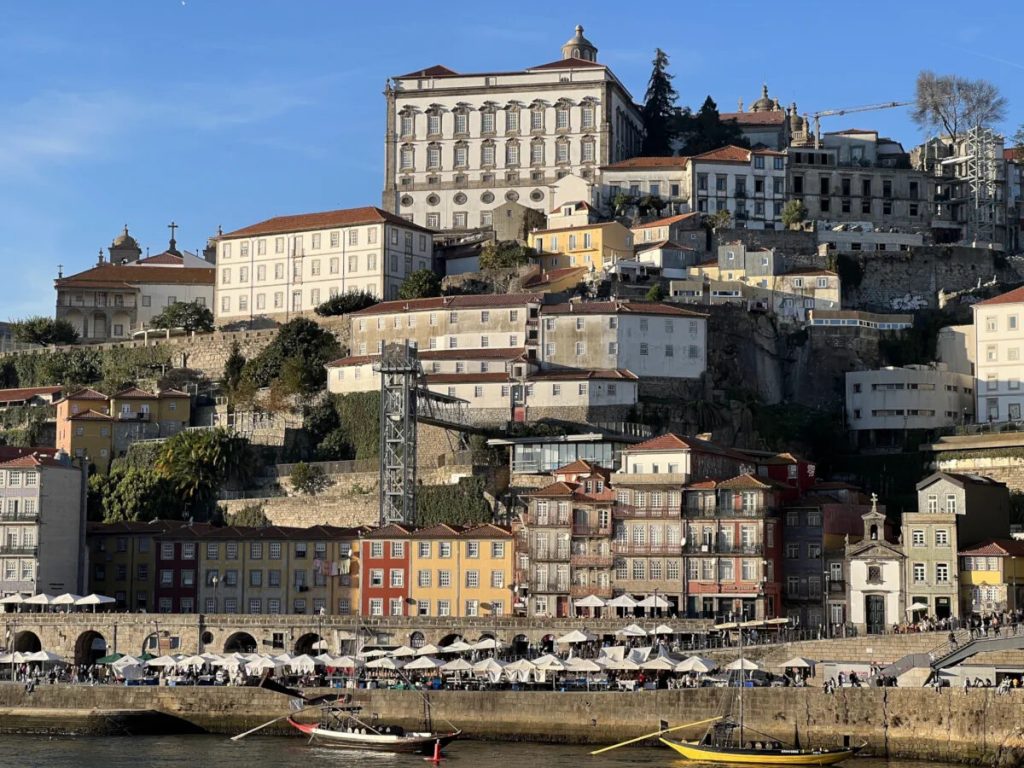



The last photo above is the Ponte Luis I. It has a high section for people and streetcars (but not motor vehicles) and there’s a low section just for pedestrians. We crossed the bottom in the daylight before the Cálen Bodega tour and crossed back on the high section after climbing a lot of stairs.




We came out of the bodega when the sun was setting on the Porto waterfront. Golden hour at its best.




Porto is a tourist town that knows how to do marketing. We HAD to visit “The Fantastic World of Portuguese Can”. In addition to cod fish, sardine fishing is a major Portuguese industry. What is inside this fantastic world?





Walls and walls of canned sardines and other types of fish with genius marketing to buy collector editions by year. We were assured the sardines inside are not as old as the dates on the cans suggest. The cans feature notable events and famous people born in the year shown. I learned I’m the same age as Claudia Schiffer and Mariah Carey. Lyn’s can celebrated man’s first landing on the moon. They have cans going back to 1930 so there’s something for everyone here.




Guiamãres
On our drive back to Galicia, we stopped in Guiamãres, which has a terrific medieval historic center, a Ducal palace from the 1500s, and a castle from the 1100s.
Guiamãres is considered the birthplace of Portugal as an independent nation state after King Afonso Henriques won a decisive victory over his mother at the Battle of São Mamede near Guiamãres in 1128. Actual nationhood came a few years later in 1143 and involved some complicated diplomatic and political maneuverings with the the Kingdoms of Galicia and León. After nationhood, Afonso Henriques turned his armies southward and started duking it out with the Moors. The overarching theme is that the Portuguese were a challenging bunch to lead as a vassal state and definitely weren’t lacking for grit. The seeds of their eventual global maritime empire in the 1400-1500s were evident quite early.
In a highly distilled version, Afonso Henriques is something like the George Washington of Portugal, making his hometown of Guiamãres an extra special place.
Our first stop in Guiamãres was to the Palace of the Dukes of Braganza. Built in the 1420s, it is extremely well preserved both architecturally and as a museum.
Several rooms were decorated with enormous tapestries depicting King Alfonso V’s conquest of Tangier and Asilah, Morocco in the 1470s. These tapestries are duplicates of the 15th Century originals, which are in a museum in Pastrana, Spain. The first in the series is entitled “Landing at Asilah” which was an amphibious operation involving 30,000 troops. This, of course, appealed to the amphibious warfare planner in me and validates the enduring challenges of expeditionary warfare. The campaign was ultimately successful but it had its issues with weather complicating the landing.




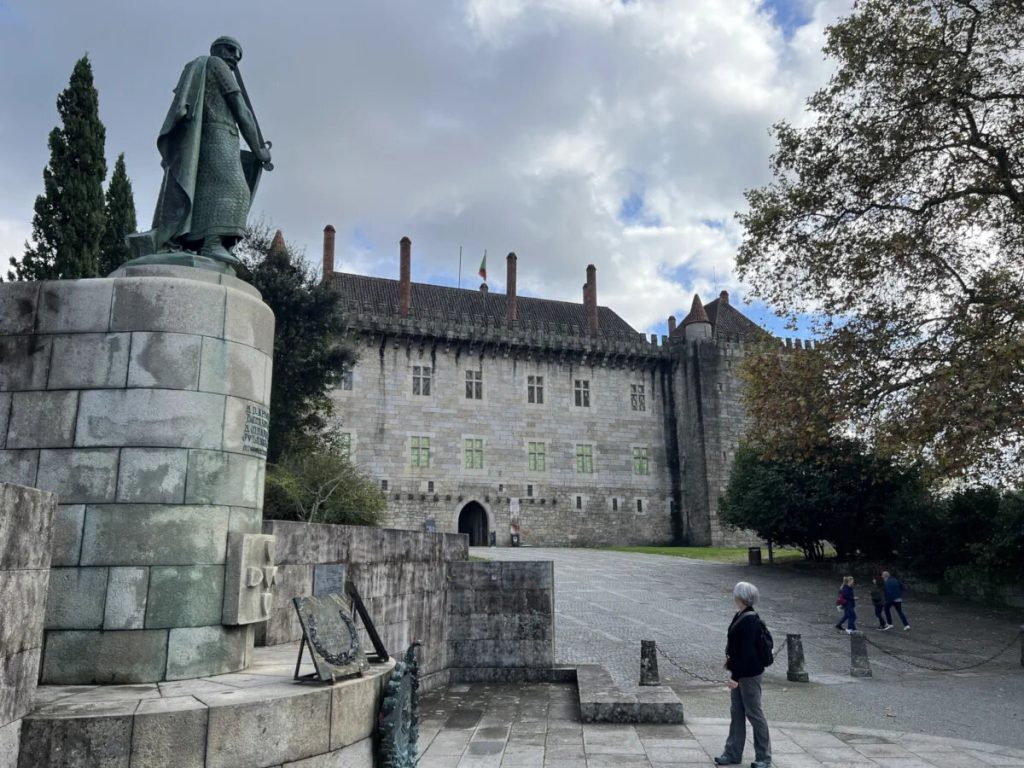

We also visited the much older castle, built in the 1100s. It was pretty sparse inside and only had one functional set of rooms inside the tower. It underwent multiple additions and then fell into disrepair for a couple centuries when the feudal age ended and such fortifications lost their main purpose. I had to stand in line behind some kids for SO LONG to try on the battle helmet. The sword was fixed to some metal rods to avoid mishaps. Being a good castle, it was built on the high ground and offered some nice views of the surrounding area.




We had lunch in the historic center and enjoyed strolling the narrow streets.
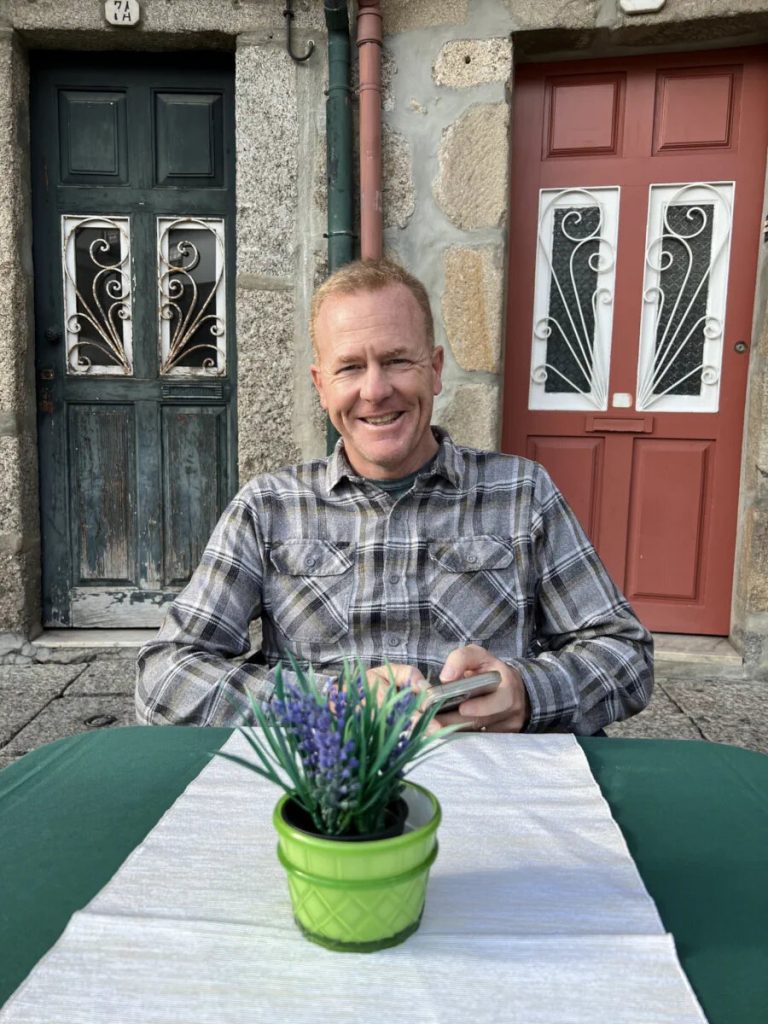


Obrigado a Portugal
Given how much we saw with how little we planned, Portugal clearly has a lot to offer. Our short list of unexecuted things to see included a couple other towns as well as a hike on the Paiva River an hour southeast of Porto, which features a network of wooden walkways and a 516m suspense bridge (second longest in Europe). With two more days, we definitely would have added these to the itinerary. We also would have enjoyed going deeper into the many attractions, sites, and museums that Porto has to offer.
We had a great road trip and are 2 for 2 now on visiting Portugal. With a little work on our Portuguese, we will be ready for a longer visit next time.
